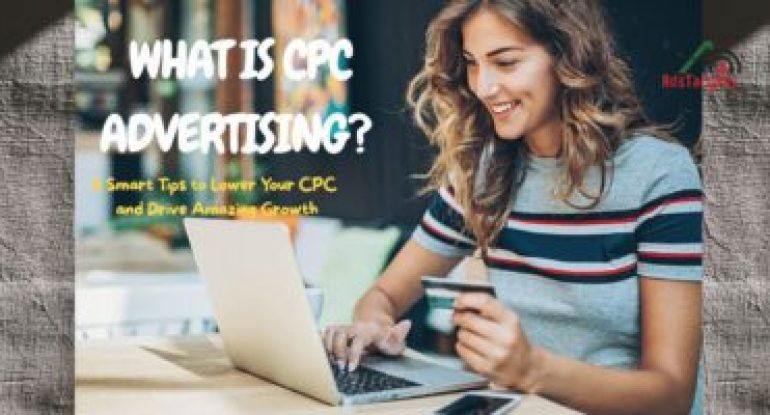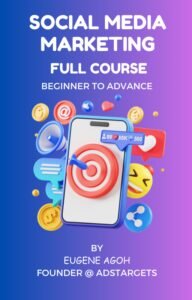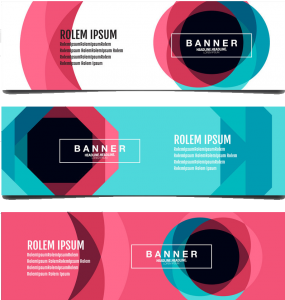Let’s talk about one of the smartest ways to spend your marketing budget – CPC advertising. Short for Cost Per Click, it’s an online advertising model where you only pay when someone actually clicks on your ad. That means every naira or dollar you spend goes directly toward getting real visitors to your website – not just empty views or impressions.
In simple terms, CPC advertising helps you make the most of your ad budget. Whether your goal is to drive traffic, boost sales, or increase brand awareness, this model ensures you’re paying for measurable results – real clicks from real people. It’s one of the most efficient and transparent ways to advertise online because you can track exactly where your money is going and what it’s bringing back.
In digital marketing, CPC often works hand in hand with PPC (Pay Per Click) campaigns. The two go together because PPC refers to the overall strategy of paying per click, while CPC focuses on how much you pay per click. Platforms like Google Ads and Facebook Ads use this model to help you set specific targets – from choosing the right keywords to defining your audience and setting your maximum bid.
The beauty of CPC advertising is control. You get to decide who sees your ad, when they see it, and how much you’re willing to pay for each visit. This gives businesses big or small the power to stretch their budget while reaching the right people.
In short, CPC advertising is like paying only for results that count. No wasted money. No random exposure. Just focused, performance-driven advertising that helps you reach your goals smarter and faster.
Table of Contents
ToggleWhat Is Cost Per Click (CPC)?

In simple terms, CPC (Cost Per Click) is how much you pay every time someone clicks on your online ad. It’s one of the most common pricing models in CPC advertising, where advertisers are charged based on real engagement — not just how many people see the ad, but how many actually interact with it by clicking.
This model works across all kinds of digital ads — from Google search results and banner ads on websites to social media platforms like Facebook, Instagram, and LinkedIn. It’s a straightforward way for businesses to control costs while driving targeted traffic to their websites or landing pages.
The real advantage of CPC advertising lies in its precision and efficiency. When you know exactly what you’re paying for each click, you can easily measure how well your campaigns are performing. This helps marketers forecast potential website visits, compare ad strength, and calculate their Return on Ad Spend (ROAS) — a key metric that shows how much profit you’re making from your ads compared to what you spend.
But here’s the catch: not all clicks cost the same. The average CPC can vary dramatically depending on your industry, competition, and keyword demand. For example, a click in the legal or insurance industry might cost far more than one in fashion or food blogging.
Most advertising platforms, such as Google Ads and Microsoft Ads, use an auction-style bidding system. This means advertisers bid on specific keywords or audiences, and the price of each click is determined by factors like ad quality, competition, and relevance.
So, in a nutshell, CPC advertising is about getting value for every click. It allows you to attract the right audience, measure performance clearly, and optimize your budget to bring in real results — not just impressions.
How Does CPC Advertising Work?

To really understand how CPC advertising works, think of it as a digital auction house that runs 24/7. Every time someone types a keyword into a search engine or visits a website that displays ads, an instant auction happens behind the scenes. Advertisers “bid” on that opportunity by stating how much they’re willing to pay for a single click — this is known as their maximum cost per click (CPC).
Here’s the fun part: these auctions happen automatically in milliseconds. Once a potential ad opportunity is triggered, the ad platform (like Google Ads or Microsoft Ads) runs a quick calculation to determine which ads should appear and in what order. This ranking — known as ad rank — isn’t just based on who’s bidding the most money. It also factors in your ad quality and relevance to the user’s search or interests.
So even if your competitor bids higher than you, your ad can still show up above theirs if your ad copy, landing page, and targeting are better optimized. That’s the beauty of CPC advertising — it rewards both smart strategy and creativity, not just big budgets.
Once your ad goes live, every time someone clicks on it, you pay an amount that’s typically lower than or equal to your maximum bid. The actual amount depends on what others bid and how well your ad performs.
There are a few ways to manage this bidding process:
#1. Manual CPC Bidding: You control everything. You set the exact maximum amount you’re willing to pay for each keyword or ad group. This strategy gives you full control, but it requires careful monitoring and frequent adjustments.
#2. Enhanced CPC (eCPC) Bidding: This is a smart, automated option. You set a maximum bid, and the ad platform uses its algorithm to make small adjustments in real time to help you get more conversions — like sales or sign-ups — without overspending.
To get the best results, keep a close eye on how your ads perform. If you notice your ad isn’t getting shown often enough, it might be time to tweak your budget, adjust your keywords, or improve your ad quality.
In short, CPC advertising is a balance between smart bidding and quality. The better your ad relevance and targeting, the less you’ll pay for more meaningful clicks — making your ad spend work harder for you.
How to Calculate CPC in CPC Advertising

Calculating your CPC advertising cost is actually super simple — it’s all about knowing how much you’re paying for every single click your ad gets. The formula looks like this:
CPC = Total Ad Spend ÷ Total Number of Clicks
For example, if you spent $100 on an ad campaign and it got 50 clicks, your cost per click (CPC) would be $2. That means, on average, you’re paying two dollars every time someone clicks your ad.
But here’s something a lot of people get wrong — your final CPC isn’t always the same as the maximum bid you set in your campaign. You might bid higher to stay competitive in the auction, but you’ll often end up paying less depending on how your ad performs.
In CPC advertising, your actual CPC depends on a few key factors:
Your chosen ad platform (like Google Ads or Facebook Ads) — each has its own algorithm and competition level.
Your bidding strategy — manual bidding gives you control, while automated bidding lets the system optimize for you.
Your Quality Score or Ad Rank — this measures how relevant, engaging, and useful your ad is to the audience. The higher your score, the lower your CPC can be.
Think of it like this: if your ad is performing really well and users are clicking it because it’s relevant and interesting, platforms reward you by charging less per click. That’s how smart CPC advertising can stretch your budget — you pay less for better performance.
So, while the math is straightforward, the real magic happens when you combine a solid strategy with high-quality, relevant ads. The better your ad, the cheaper each click becomes — and the more value you get from every dollar spent.
5 Smart Tips to Lower Your CPC in CPC Advertising

When it comes to CPC advertising, keeping your costs low while getting great results is the real goal. The less you pay per click, the more reach and value you get from your budget. Thankfully, there are practical ways to make that happen. Here are five smart strategies you can use to lower your CPC and get the most out of every ad dollar.
#1. Improve Your Ad Quality Score
Your ad quality score is like a report card that platforms such as Google Ads use to rate your ads. It’s based on how relevant, helpful, and engaging your ad is for your audience. A higher quality score means you’ll pay less for each click.
To boost your score, make sure your ad closely matches your target keywords, the search intent behind them, and the landing page you’re sending people to. For example, if your ad promises “affordable running shoes,” your landing page should show exactly that — not hiking boots or random sports gear. Also, use attention-grabbing headlines, persuasive descriptions, and a clear call to action (CTA). When your ad content feels genuine and useful, people click more — and platforms reward you with lower CPCs.
#2. Choose Better (and More Specific) Keywords
In CPC advertising, not all keywords are created equal. Some keywords are super competitive, meaning everyone’s bidding on them — and that drives up costs. Instead of targeting broad, high-cost words like “laptops,” go for long-tail keywords like “affordable gaming laptops for students.” These are more specific, cheaper, and often attract people who are ready to take action.
Keyword research tools like Google Keyword Planner or Ubersuggest can help you find low-competition gems that still bring quality traffic to your site.
#3. Refine Your Campaign Targeting
Your ads shouldn’t try to reach everyone — they should reach the right people. Narrowing your targeting helps you avoid wasting money on irrelevant clicks. For example, if your data shows most of your customers buy on weekends or mostly use mobile phones, adjust your ad settings to focus on those times and devices.
Refine things like:
#1. Location targeting: Focus on regions where your audience lives or buys.
#2. Ad schedule: Run your ads when your audience is most active.
#3. Device type: Target desktop, mobile, or tablet users depending on performance.
Smarter targeting makes your ads more efficient, lowering CPC while improving conversions.
#4. Run A/B Tests
A/B testing is one of the most effective ways to make CPC advertising work harder for you. It’s like running a mini experiment — you create two versions of your ad with small changes (like headlines, images, or CTAs) and see which one performs better.
Over time, you’ll discover what kind of messaging and visuals your audience actually responds to. Once you know what works best, you can put your money behind those stronger ads and stop wasting budget on weaker ones.
#5. Track, Analyze, and Optimize Constantly
If you’re not monitoring your campaigns, you’re basically flying blind. Keep a close eye on your click-through rates (CTR), keyword performance, and conversion data. Identify which keywords or audience segments are driving results — and which ones are just eating your budget.
Cut out the underperformers and redirect that money to the ads that are actually working. Over time, this simple habit can make your entire ad strategy more cost-effective.
Bottom line: Lowering your CPC doesn’t mean cutting corners — it means working smarter. By improving your ad quality, tightening your targeting, testing often, and analyzing results, your CPC advertising can deliver more clicks, better engagement, and bigger returns for every dollar you spend.
CPC Advertising FAQ

Curious about CPC advertising and how it all works? Here’s a quick breakdown of the most common questions marketers ask — along with clear, practical answers to help you make smarter ad spend decisions.
#1. What factors affect the cost of CPC advertising?
Several things can influence how much you pay per click in CPC advertising — including your industry, audience, competition, and even the platform you’re using.
For example, some industries (like finance, law, or insurance) are highly competitive, which naturally drives up CPC rates. Your target audience also matters — reaching specific demographics or high-value audiences can cost more.
Then there’s your Quality Score, a key metric most ad platforms use to determine ad relevance and performance. If your ad copy, landing page, and keywords align perfectly with what users are searching for, you’ll likely enjoy a lower CPC and better placement. In simple terms, the more relevant your ad, the less you pay for each click.
#2. How does CPC differ from CPM?
Think of CPC and CPM as two different ways of measuring ad success.
CPC (Cost Per Click) focuses on engagement — you only pay when someone actually clicks your ad.
CPM (Cost Per Mille) focuses on visibility — you pay for every 1,000 impressions, even if no one clicks.
In short, CPC tells you how much you pay for interaction, while CPM tells you how much you pay for exposure. CPC is ideal for campaigns that aim to drive traffic or conversions, while CPM is best for brand awareness and visibility.
#3. What is the average CPC across different industries?
CPC rates vary widely by niche. Competitive sectors like insurance and legal services have some of the highest CPCs on platforms like Google Ads — often averaging around $20 for insurance and $11 for legal keywords.
Meanwhile, industries like retail, ecommerce, and travel tend to see much lower CPC rates, often between $0.20 and $5. It all depends on how many advertisers are bidding for the same audience.
Knowing your industry’s average CPC helps you set realistic budgets and expectations for your CPC advertising campaigns.
#4. What’s the difference between PPC and CPC?
It’s easy to mix these up, but here’s the quick distinction:
PPC (Pay Per Click) is the broader advertising model where advertisers pay each time a user performs an action, like clicking an ad.
CPC (Cost Per Click) is the actual pricing metric used within PPC campaigns — it tells you how much each click costs on average.
So, all CPC campaigns are part of PPC advertising, but not all PPC campaigns are strictly CPC-based. Some may use CPE (Cost Per Engagement) or CPM (Cost Per 1,000 Impressions) instead.
In summary, CPC advertising is all about paying for action — you invest in actual engagement, not just exposure. When done right, it’s one of the most efficient and measurable ways to drive meaningful traffic and conversions.
Conclusion
At the end of the day, CPC advertising is more than just a numbers game — it’s about strategy, creativity, and understanding your audience. When you know how to calculate your CPC, optimize your ad quality, choose the right keywords, and monitor performance, you’re no longer just spending money on ads — you’re investing in results.
Whether you’re running small campaigns or scaling up across multiple platforms, the goal remains the same: to get the most clicks for the best price. Keep testing, refining, and learning from your data. Every improvement — no matter how small — helps you lower costs and boost performance.
So, go ahead and fine-tune your next campaign. Master the art of CPC advertising, and watch how every click starts to bring you closer to your marketing goals.








